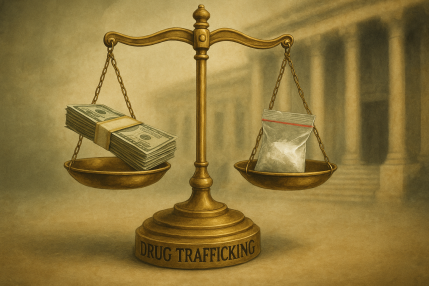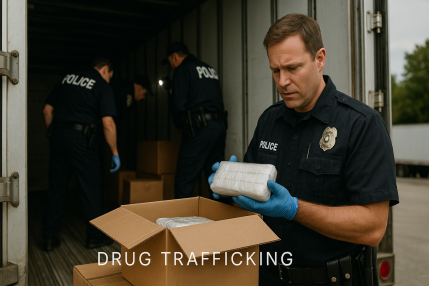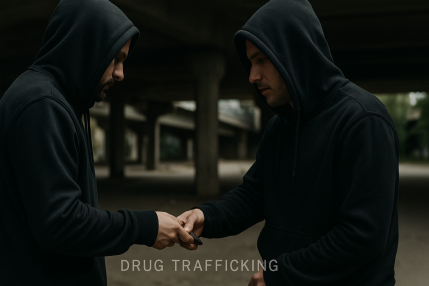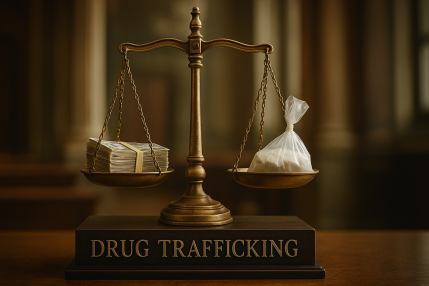
Many substances are commonly known as drugs: opium and its derivatives, cocaine, hashish, hallucinogens, and various psychotropic substances (tranquillisers, hypnotics and other medicines). Legally, however, only substances classified by law as narcotic drugs qualify.
The CC’s interpretative provision defines narcotic drugs for criminal law purposes. A narcotic drug is any substance listed in Annex 1 (Schedules 1–2) of the ministerial decree on controlled substances and any psychotropic substance listed in Annex 2 (Schedules 1–2).
Accordingly, the object of the offence may be any substance that the Criminal Code—specifically its interpretative clause [CC Section 459 (1) point 18]—qualifies as a narcotic drug. This clause determines the scope by reference to another legal instrument: Decree 78/2022 (XII.28.) of the Minister of Interior on controlled substances. Its annexes list substances regarded as narcotic drugs, psychotropic substances, or psychoactive substances.
Some intoxicating or dependence-producing substances are not “narcotic drugs” under that decree but are treated as psychoactive substances; their illegal distribution may still constitute another offence. An example is abuse of a new psychoactive substance, which may be committed by handing over or trading as well [CC Section 184 (1)], and is sanctioned more leniently than drug trafficking. If such a substance is later reclassified as a narcotic drug, drug trafficking provisions will apply from that point onwards.
Incitement to pathological passion may relate to a non-narcotic yet intoxicating substance (e.g., solvent, paint thinner) but only if a person over 18 induces, attempts to induce, or assists a minor in the pathological enjoyment of such a substance [CC Section 181 (1) a) and (2)].
Neither alcohol nor tobacco is a narcotic drug; however, unlicensed dealing in such products may amount to budgetary fraud [CC Section 396 (1), (6)].
Drug trafficking is not limited to trading sensu stricto; it may also be committed by offering, handing over (transfer) or distribution. These modes are clarified by Curia uniformity decision 1/2007. BJE, Collegium opinion BKv 57., and multiple binding case-law decisions.
A person offers a narcotic drug by unsuccessfully calling upon another to receive it. Offering occurs where the offender, having the drug in their possession or at their disposal, invites another to obtain it, but no transfer follows. It is immaterial whether the offer is verbal or by conduct, or whether consideration is expected or it is free of charge.
Handing over means delivering possession of the narcotic drug to another person. Practice holds that handing over is made out if the sole purpose is the transferee’s own consumption.
Drug trafficking is committed by handing over where the offender delivers the narcotic drug into the possession of someone who intends to consume it themselves. Handing over occurs when an earlier offer succeeds and the recipient obtains the drug. In such a case, the acquirer commits possession of narcotic drugs under CC Section 178.
A person distributes a narcotic drug by supplying it to several persons, for consideration or free of charge. It also counts as distribution to ensure access for several persons via a single intermediary, by a single transfer. The act is complete once the drug enters circulation, i.e., once there is a real possibility that others obtain it through onward supply (BH 2002. 299.).
A person trades in narcotic drugs by seeking profit and participating in their distribution. Trading is a repeated, profit-oriented pattern of sales within which not only sellers and buyers but also regular intermediaries may be liable as perpetrators (BH 1999. 101.).
Whereas handing over targets one consumer, trading and distribution cover—beyond the transfer inherent in them—all steps aiming to bring narcotic drugs into circulation, even through interposed persons. This includes, in particular, finding sellers and buyers, concluding agreements, storing, scouting the handover site, arranging transport and escorts (BH 2002. 299.).
According to the binding interpretation, acquiring or stockpiling narcotic drugs for the purpose of trading already constitutes a completed, independent perpetrator’s act of trading (1/2007. BJE IV).
Qualifying circumstances include, for example: acting in criminal conspiracy, involving a minor, or dealing with a significant quantity of narcotic drugs.

Section 24 CC provides that an act is not punishable if performed under statutory authorisation. Thus, drug trafficking is not punishable where the person is licensed under separate legislation [Government Decree 66/2012 (IV.2.)] to distribute a narcotic drug (and stays within the licence). A person who exceeds the licence, or could not have obtained such a licence at all, commits an offence.
For drug trafficking, the CC distinguishes small quantity, the basic case, and significant quantity. The CC defines “small” and “significant”; the basic case is any quantity above small but below significant.
As a rule, thresholds are tied to pure active-substance content. For example:
Determining the pure active-substance content of seized material is a forensic expert task. If an expert opinion gives lower and upper bounds, the lower value must be adopted by the court (Budapest Court of Appeal 3.Bf.9/2021/34, Reasons [74]), in line with the principle that facts not proven beyond doubt cannot be assessed to the defendant’s detriment [Code of Criminal Procedure Section 7 (4)].
For unseizednarcotic drugs, it is the court, not the chemist, that must assess active-substance content on the evidence. The court may consider buyers’ testimonies and, when estimating content, may use the lowest published content values by the Forensic Institute to gauge whether the small-quantity upper limit or the significant-quantity lower limit has been exceeded.
If the act concerns cannabis plants, then irrespective of active-substance content, the quantity is small if the number of plants is no more than five [CC Section 461 (2)].
For substances not expressly listed in the statute, small quantity is that which does not exceed seven times the average effective dose for a non-tolerant consumer [CC Section 461 (4)]—again an expert task.
Significant quantity equals twenty times the small-quantity upper limit for the given narcotic drug.
For drug trafficking, particularly significant quantity does not alter the legal classification (and hence the statutory range), because significant quantity already allows for life imprisonment. Practically, however, “particularly significant” (pure content ≥ 200× the small-quantity upper limit) will be a strong aggravating factor.
Where multiple narcotic drugs are involved, quantities (converted to their respective base units) are summed proportionally to determine whether together they exceed small-quantity upper limits or the significant-quantity lower limit.

The quantity of pure active substance determines the classification (privileged/basic/qualified) and thus drives sentencing in drug trafficking cases. Quantities below the small-quantity upper limit often trigger privileged treatment. Significant or particularly significant quantities are qualified cases, punished more severely, especially where multiple narcotic drugs are involved.
Drug trafficking is severely punished. The range depends primarily on quantity, but also on the mode of commission and other factors (e.g., location):
Harsher punishment may apply where drug trafficking is committed:
involving a minor or using a minor.

Not only completed offering / handing over / distribution / trading is punishable; preparation is also punishable, albeit more leniently. Preparation includes, for example:
Penalties for preparation:
Where the call to offer or to hand over forms part of a trading scheme, it already constitutes completed drug trafficking.
During the investigation, the police or the prosecution seize the narcotic drugs (or drug-suspect materials). The court must then order their confiscation in its judgment, as items used to commit the offence must be confiscated [CC Section 72 (1) c)]. In drug trafficking cases confiscation cannot be waived [CC Section 73 c)]; ownership passes to the State, and the narcotic drugs are generally destroyed thereafter.
The court must order asset confiscation of property obtained from the offence [CC Section 74 (1) a)]. According to Supreme Court guidance (1/2008. BJE), in drug trafficking cases confiscation is not limited to the profit margin: it covers the entire property connected with the offence, irrespective of purchase costs or whether the dealing was profitable or loss-making.
Each asset must nevertheless be proven beyond doubt to have been acquired in the course of or in connection with the offence (e.g., part of the price paid by buyers).
Until proven otherwise, the following are presumed confiscable:
property acquired in the five years preceding the commencement of criminal proceedings if it is manifestly disproportionate to the offender’s legitimate income and personal circumstances [CC Section 74/A (2) a)].
These presumptions are rebuttable: no confiscation follows if the offender proves lawful origin [CC Section 74/A (3)].

If the same batch underpins both drug trafficking and possession of narcotic drugs [CC Sections 178–179], only the graver offence (drug trafficking) is established. Courts have found drug trafficking where defendants grewnarcotic drugs for sale or acquired them for sale.
Liability for possession of narcotic drugs arises only where drug trafficking (completed or attempted) cannot be established for that quantity.
If drug trafficking and possession concern different drug objects, the two offences are in concurrence—e.g., the offender trades cannabis but keeps cocaine solely for personal use.
At the first consultation, we provide a one-hour, tailored briefing on your rights and obligations in the criminal process, the likely offence classification and range in drug trafficking cases, and the next steps. After the consultation, you can make an informed decision about instructing our criminal-law team.
Drug trafficking is treated more leniently where the offence concerns a small quantity, but only if committed by offering or handing over. In those scenarios, the statutory maximum is 2 years. Distribution or trading in a small quantity remains punishable by 2–8 years.
The offence is committed by carrying out market-type activities with a narcotic drug: distribution, trading, offering, or handing over.
For drug trafficking, the CC does not allow diversion (treatment as a ground excluding punishability). This option exists only for certain cases of possession of narcotic drugs.
In drug trafficking cases, the CC does not permit unlimited mitigation of the sentence where the offender, before indictment, enables the authorities to identify their supplier. This is available only in certain possession of narcotic drugs scenarios.
